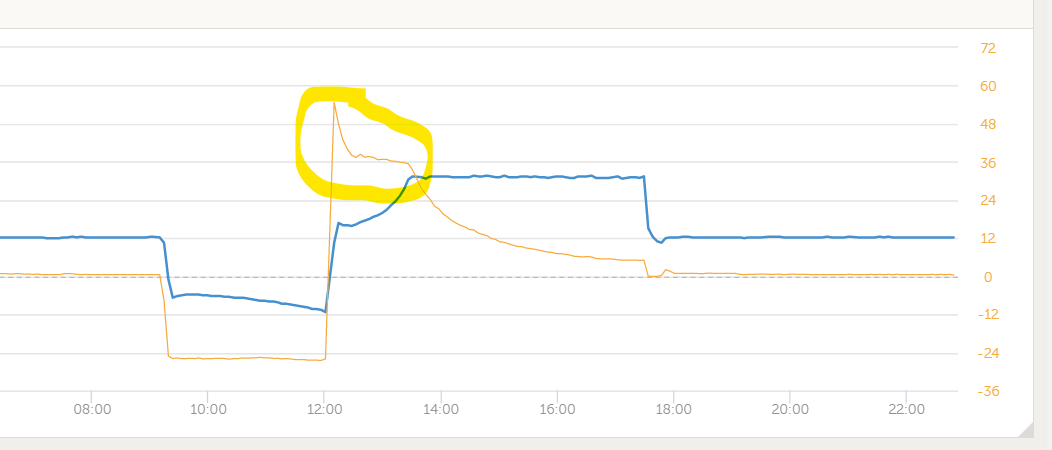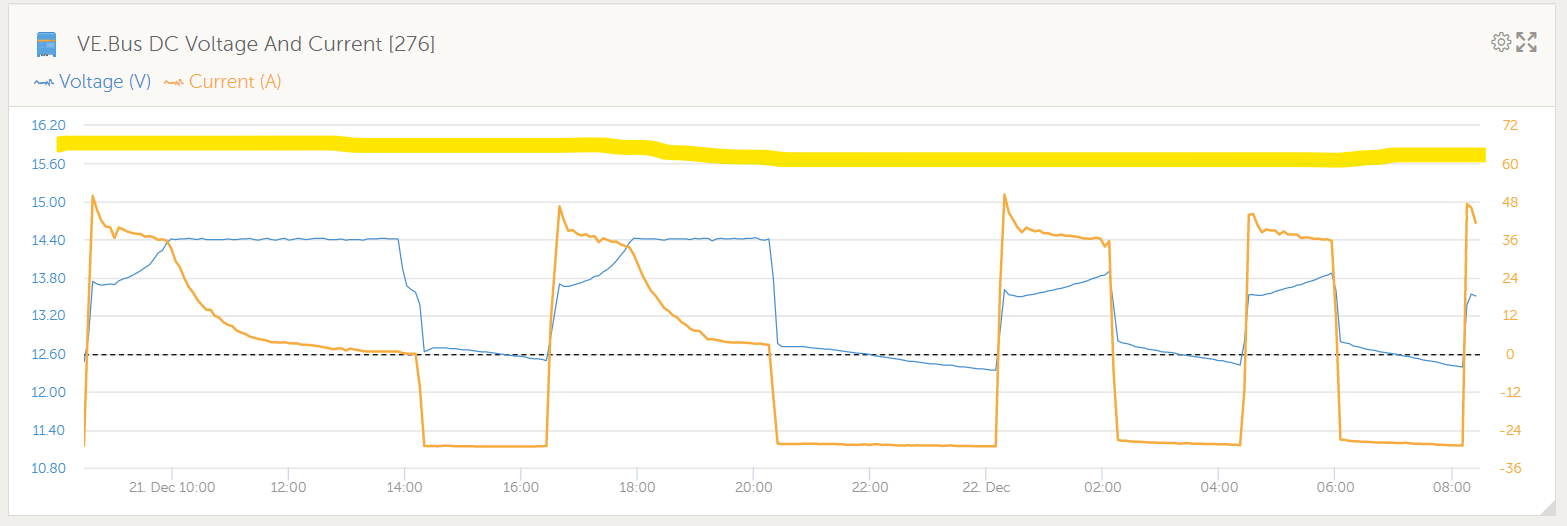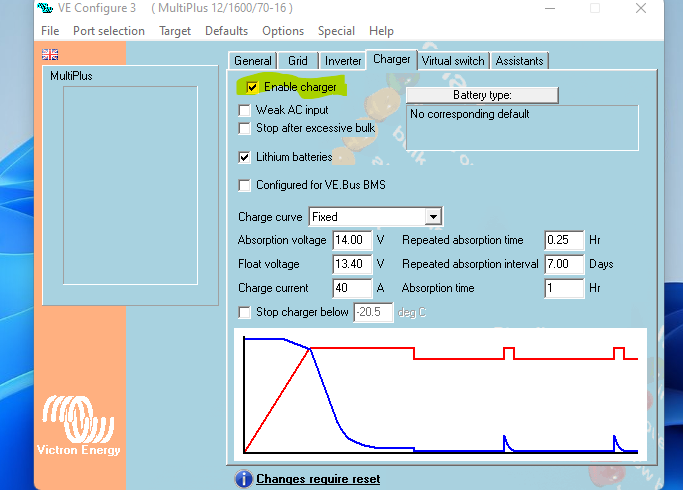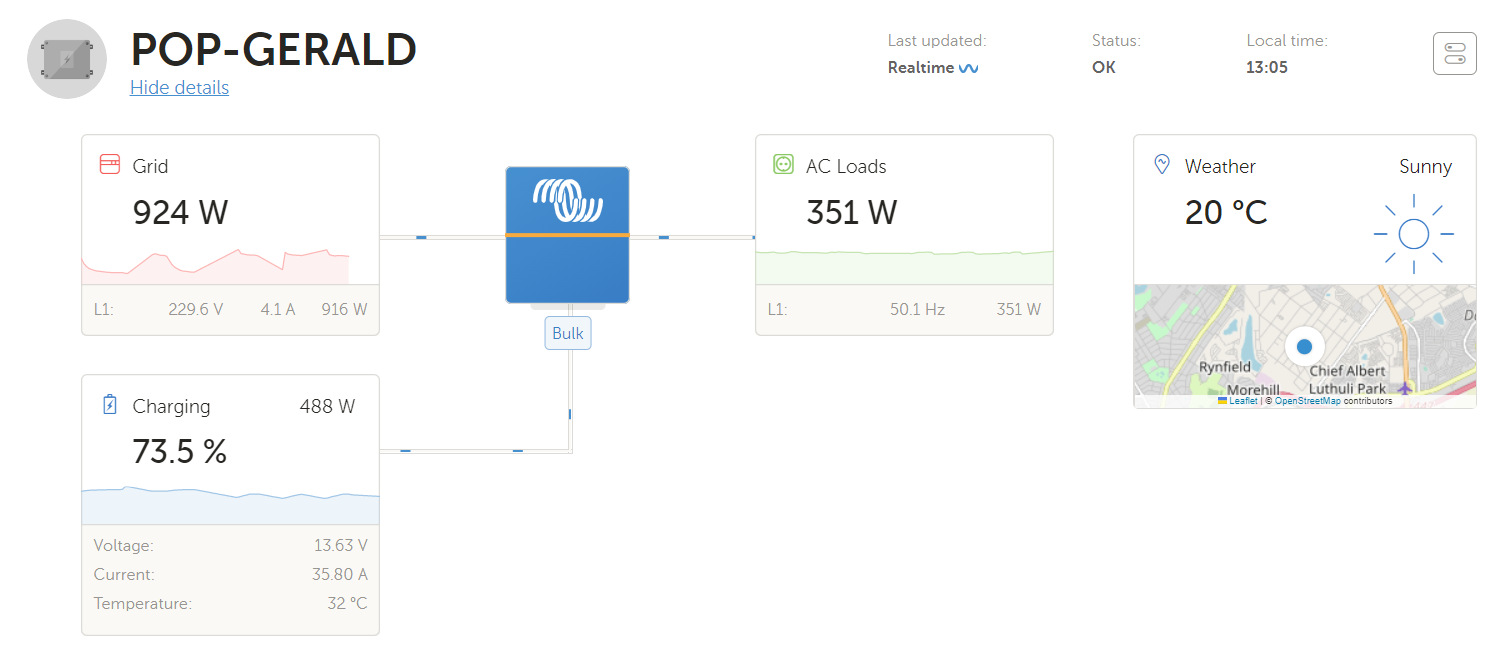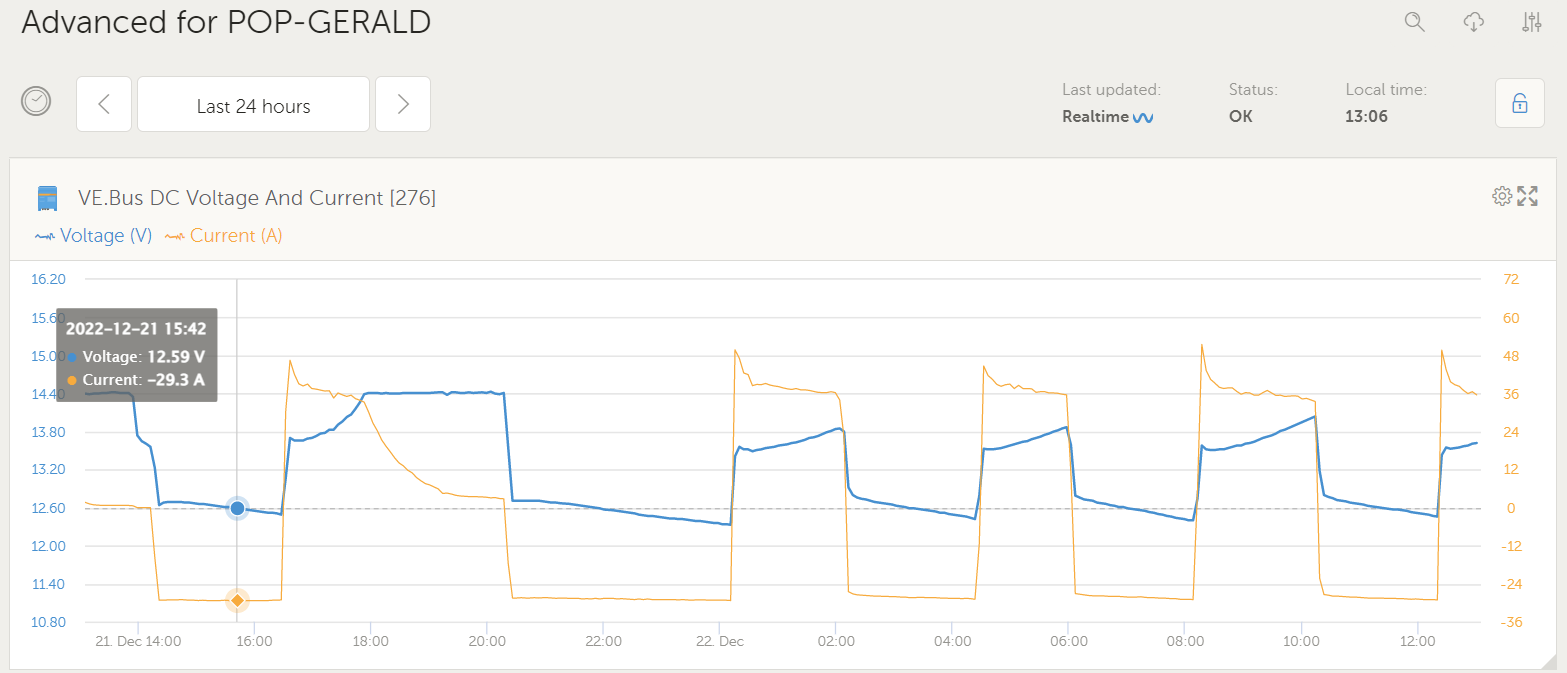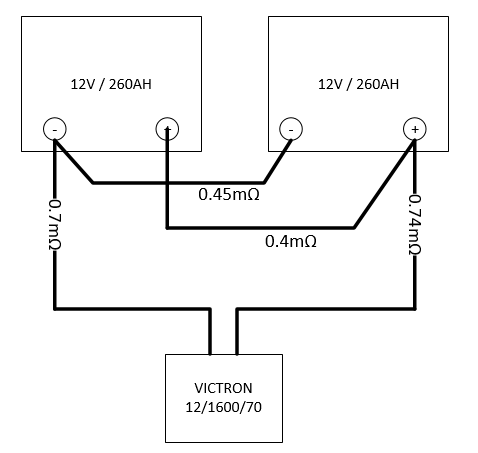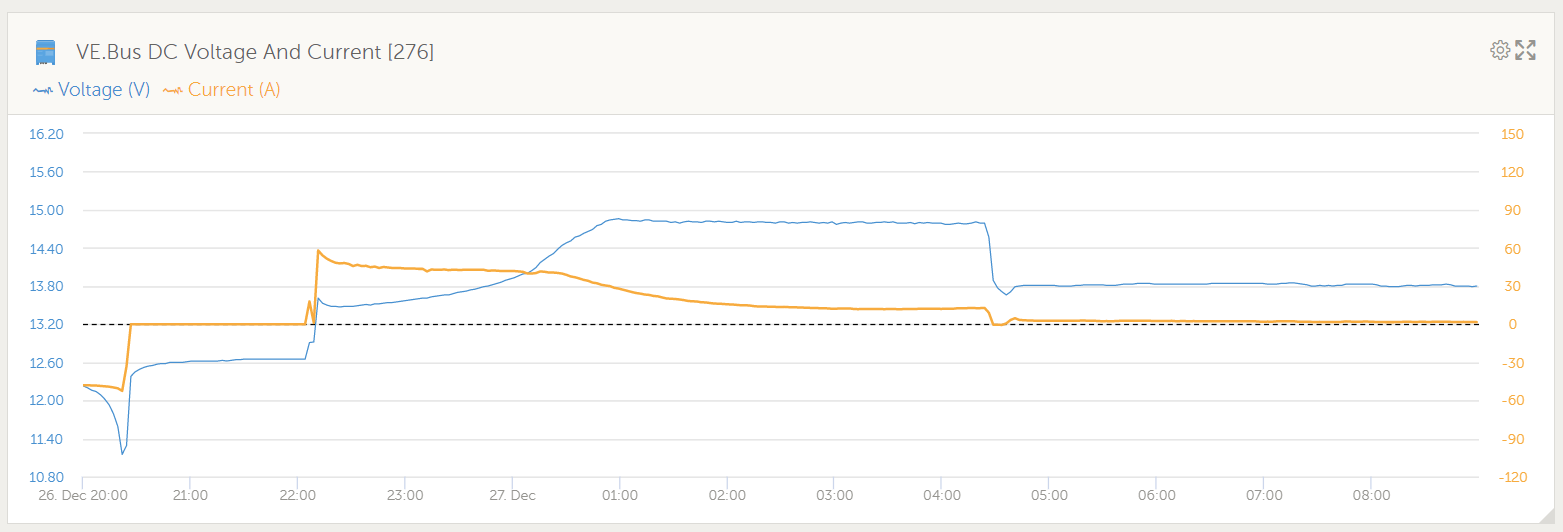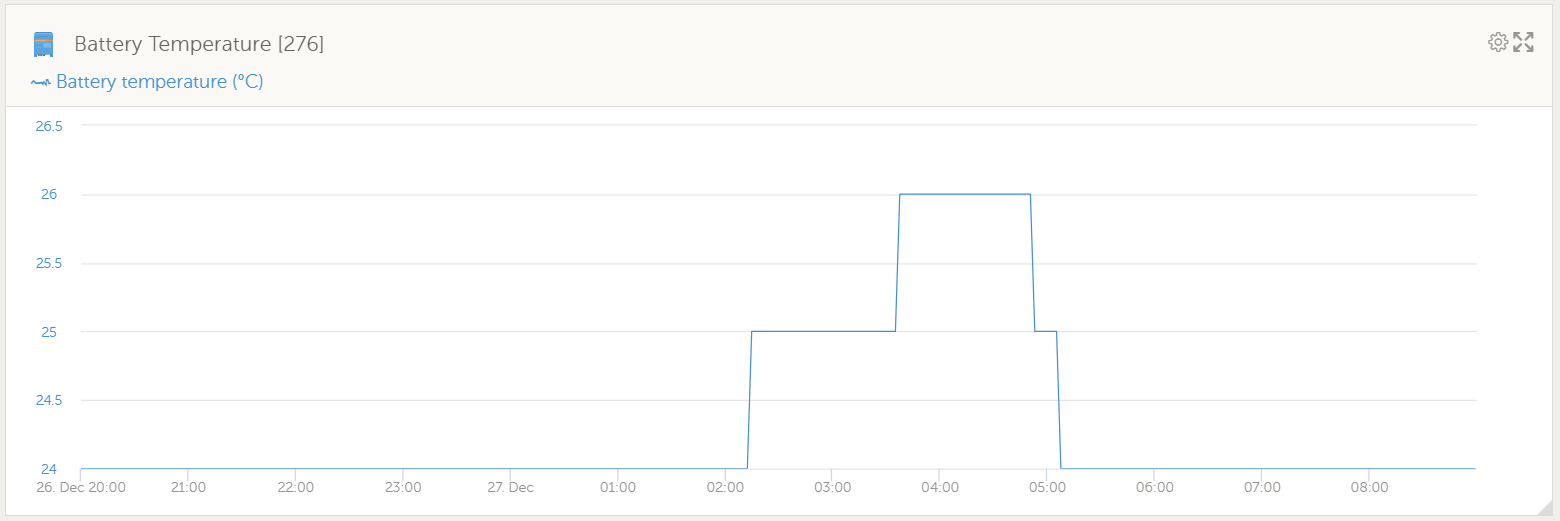Below image from VRM of charge cycle being delivered.
The battery is 2 x GEL 260AH units in parallel, result 520AH. I have around 10 of these sites all with the same 12/1600/70 unit and 520AH battery, they all do the same. The charge current peaks at the set 55A for a very short time and then drops to <40A for the rest of the bulk charge phase, well before the 14.4 set point is achieved. I have read as many posts on this issue and there does not seem to be a real answer anywhere for this problem. My local Victron supply agent has no answer for me either. Actually I would like around 60A charge current as I need to recover these units as fast as possible.
Has anyone found the reason why these units do not maintain the high level of charge the spec sheet seems to indicate is possible?
